Auckland’s Worst Road Dangers
3pm to 6pm is the most dangerous time for pedestrians in Auckland.
40 years ago 42% of Auckland kids walked to school. Now it is only 25%.
Cyclists are involved in 7% of crashes in Auckland, 57% at intersections.
18% of Auckland highway crashes -the highest proportion - are caused by drivers aged 20 to 24 years.
These are some of the intriguing stats from the latest NZTA crash analysis.
- On Auckland highways the most common factors of serious crashes are alcohol followed by going too fast for the conditions (not necessarily speeding), failure to give way, stop or keep left, overtaking and incorrect lane.
- The most common type of crash is being hit in the rear while in a queue
- 8% on highways involve motorcyclists. 11% on local roads
- 25% of accidents on local roads happen when roads are wet
- Worst spots for pedestrian accidents last year were Hobson St/ Victoria St intersection and Lower Albert/Custom St West
- The most common cyclist accident happens when a vehicle or cyclist travelling straight through is struck on the right by a vehicle or cyclist making a right turn at an intersection or into a driveway
- The worst cyclist spots are Tamaki Drive. Noel Burnside Rd, Ash and Rosebank and Alfriston and Mill Rds
The crash report is here

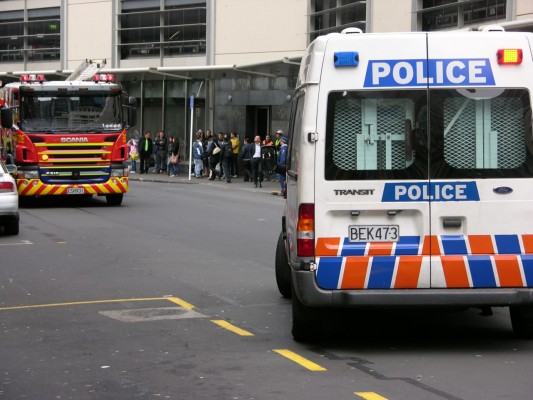
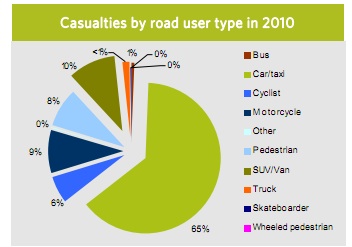
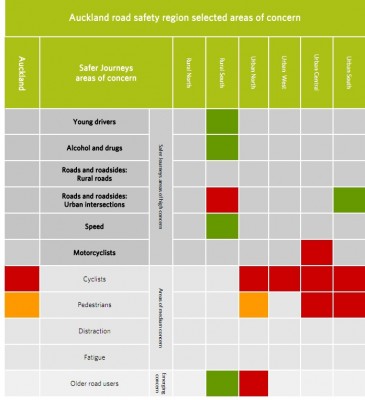
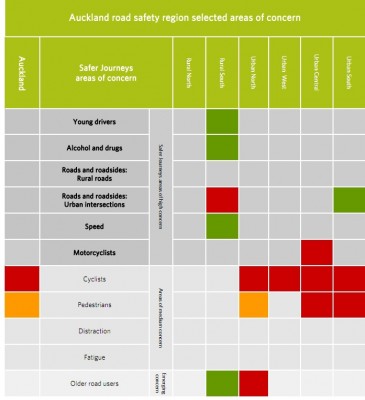
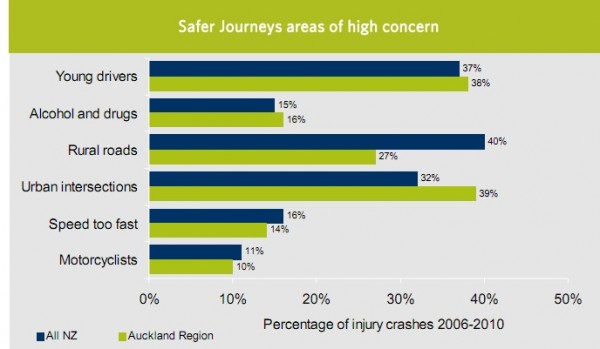










3 Comments
You need to be careful about the interpretation of some of this information, especially when there isn’t associated “exposure” data. For example, it’s probably not the case the case that 3pm-6pm is “the most dangerous time for pedestrians in Auckland”; that’s probably just when there are the MOST pedestrians around (I’d wager that a dark rainy night is probably the most dangerous time for a pedestrian..).
I agree with Glen, it’s the old story you can make statistics do what you want them to.
This item seems to be emphasising the cycling statistics yet from my observations there are more cyclists on the road than motorcyclists and motorcyclists have a statistic several points higher.
Another point of interest is the number of accidents involving the perceived super safe SUV’s have but this is confused by merging them with vans.
Cycling statistics should be separated out into recreational/racing and utility and I think these figures would be very different
It also stands to reason that there would be less “casualties” in 40 tonne trucks than say motorcycles but the inference here is they have few crashes
Similar “careful with the statistics” on “cycling on Tamaki Drive is dangerous”. Tamaki Drive is the busiest cycling route of all of Auckland, with over 500,000 cyclists a year. Of course that also means a lot of crashes happen there. It doesn’t mean that it is a particularly bad road for cycling, to the contrary.
Another interesting item not covered here is that the seriousness of Auckland cycle crashes is actually lower than NZ-wide. I.e. you are more likely to come off lighter here than, say, having a cycle crash in the Waikato, on average. Probably because of our many urban 50 km/h roads.